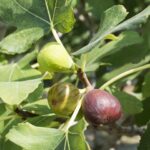Is Pine Sap Toxic To Dogs
Pine sap is a common sight on trees, especially during the warmer months. It’s sticky and gooey, and it can be a pain to clean up. However, for dog owners, pine sap presents a more significant concern than just being an eyesore. Many are wondering if pine sap is toxic to dogs.
To answer this question, we need to take a closer look at what pine sap is and how it affects dogs.
What Is Pine Sap?
Pine sap, also known as resin or pitch, is a sticky substance that comes from pine trees. It’s produced by the tree to protect it from injury or infection. When a tree is damaged, the sap oozes out and forms a protective barrier over the wound.
Pine sap has many uses in industry and medicine. It’s used in the production of varnishes, adhesives, and even chewing gum. It’s also been used for centuries in traditional medicine to treat a variety of ailments.
Is Pine Sap Toxic to Dogs?
The short answer is yes; pine sap can be toxic to dogs if ingested in large amounts. The severity of the toxicity depends on how much your dog ingests and their size.
Pine sap contains several compounds that can be harmful to dogs, including turpentine and pinene. These compounds can cause digestive upset, such as vomiting and diarrhea, when ingested in small amounts.
However, if your dog ingests large quantities of pine sap, it can cause more severe symptoms such as liver and kidney damage or even death.
Symptoms of Pine Sap Toxicity in Dogs
If you suspect that your dog has ingested pine sap, there are several signs you should look out for:
– Vomiting
– Diarrhea
– Loss of appetite
– Lethargy or weakness
– Jaundice (yellowing of the skin or eyes)
– Increased thirst or urination
– Seizures
If your dog is exhibiting any of these symptoms, you should contact your veterinarian immediately.
What to Do If Your Dog Ingests Pine Sap
If you catch your dog eating pine sap, the first thing you should do is try to remove as much of it from their mouth as possible. You can use a damp cloth or paper towel to wipe away any sap that’s stuck to their lips or tongue.
Next, monitor your dog closely for any signs of toxicity. If they start vomiting or having diarrhea, withhold food and water for a few hours to let their digestive system settle. If the symptoms persist or worsen, seek veterinary care.
Preventing Pine Sap Toxicity in Dogs
The best way to prevent pine sap toxicity in dogs is to keep them away from pine trees. If you have a pine tree on your property, make sure your dog can’t access it. You can also use barriers or fencing to block off areas where pine sap may be present.
If you’re out hiking with your dog and come across a pine tree with sap oozing out, keep your dog on a tight leash and steer clear of the tree.
Conclusion
In conclusion, pine sap can be toxic to dogs if ingested in large amounts. While small amounts of pine sap may cause digestive upset, larger quantities can lead to more severe symptoms such as liver and kidney damage.
If you suspect that your dog has ingested pine sap, monitor them closely for any signs of toxicity and contact your veterinarian immediately if they exhibit any symptoms. The best way to prevent pine sap toxicity in dogs is to keep them away from pine trees and areas where pine sap may be present.



